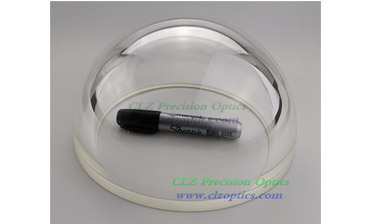Why Does Optical Glass Have a High Degree of Transparency?
Jun. 25, 2021
As an Optical Domes Supplier, share it with you.
Optical glass has a high degree of transparency, a high degree of chemical and physical (structure and performance) uniformity, and has specific and precise optical constants.
Optical Glass Lense
The image brightness of the optical system is proportional to the transparency of the glass. The transparency of optical glass to light of a certain wavelength is expressed by the light absorption coefficient Kλ. After the light passes through a series of prisms and lenses, part of its energy is lost by the interface reflection of the optical parts and the other part is absorbed by the medium (glass) itself. The former increases with the increase of the refractive index of the glass. For high-refractive-index glass, this value is very large. For example, the light reflection loss of one surface of counterweight flint glass is about 6%. Therefore, for an optical system containing multiple thin lenses, the main way to increase the transmittance is to reduce the reflection loss on the lens surface, such as coating the surface with an anti-reflection coating. For large-sized optical parts such as the objective lens of an astronomical telescope, the transmittance of the optical system is mainly determined by the light absorption coefficient of the glass itself due to its large thickness. By improving the purity of the glass raw materials and preventing any coloring impurities from mixing in the entire process from batching to smelting, the light absorption coefficient of the glass can generally be made less than 0.01 (that is, the light transmittance of the glass with a thickness of 1 cm is greater than 99%).
Our company also has Optical Glass Lense on sale, welcome to contact us.
Previous: Laser beam expander



















